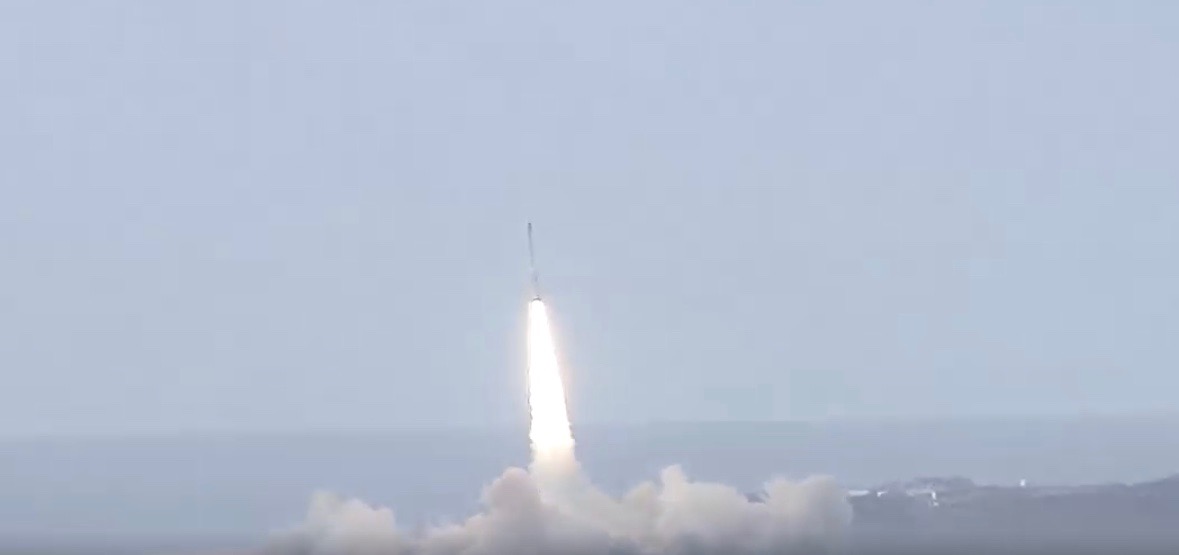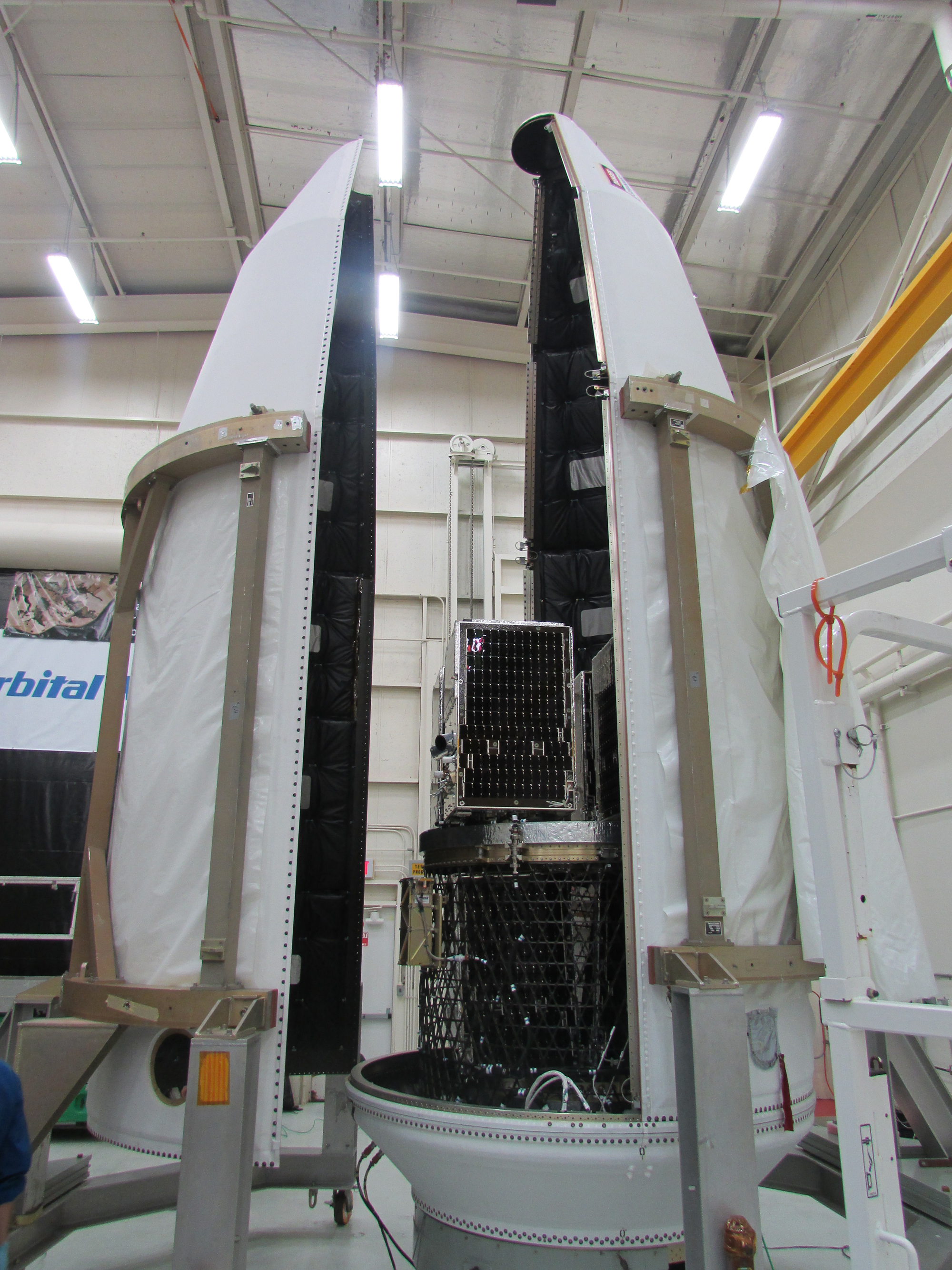Orbital ATK's 'Frankenstein' Minotaur C Rocket Blasts Off on Halloween
A brand-new type of rocket, the Minotaur C, blasted off on its maiden voyage today (Oct. 31) to deliver several new Earth observation satellites into orbit.
Orbital ATK's Minotaur C lifted off from Space Launch Complex 576E at Vandenberg Air Force Base in California at 5:37 p.m. EDT (2:37 p.m. local time, 2137 GMT).
About 15 minutes later, the rocket deployed six SkySat Earth-imaging satellites and four Dove cubesats for the commercial imaging company Planet. "Liftoff of Minotaur C, carrying the SkySat and Dove satellites for Planet," Sean Wilson, director of corporate communications for Orbital ATK, said during a live webcast of the launch. [Gallery: Planet Labs Photos of Earth from Space]
Planet contracted the private spaceflight company Orbital ATK to launch these satellites on its new and improved Minotaur C rocket, which was formerly known as the Taurus XL.
Shortly after launch, Wilson reported a brief loss of telemetry data. But this little Halloween scare turned out to be inconsequential, and telemetry was quickly recovered as the rocket made its way into low-Earth orbit.
Building a "Frankenstein" rocket
Built by Orbital ATK, the Minotaur C rocket is a hybrid version of the company's old Taurus XL rocket, Pegasus rocket and Minotaur family of rockets.
After Orbital ATK suffered a series of launch failures with the Taurus rockets — which led to the loss of NASA's Orbiting Carbon Observatory as well as its Glory climate-monitoring satellite — the company redesigned the Taurus. The new and improved rocket uses newer and more reliable technologies that Orbital ATK had built for its other Minotaur rockets.
Breaking space news, the latest updates on rocket launches, skywatching events and more!
"To date, our Minotaur rockets have completed 26 missions out of every major U.S. spaceport with 100 percent success, demonstrating the vehicle’s unique versatility and reliability," Orbital ATK officials said in a statement.
The upgraded Minotaur C closely resembles a Taurus rocket, but it incorporates "numerous design features that are [in] common with the Minotaur product line, such as the rocket's electrical power system, payload fairing, flight-termination system, navigation sensors and RF components," the statement said. The company also refers to the Minotaur C as "a ground-launched variant" of the air-launched Pegasus rockets.
Minotaur C is equipped with four solid-fueled rocket stages, stands 92 feet (28 meters) tall and can deliver payloads of up to 3,500 lbs. (1,590 kilograms) into orbit.
"Green" satellites
Not only are the 10 satellites that Minotaur C just launched made to study the Earth, but some of them also help protect the planet by running on more environmentally friendly or "green" technology.
Developed by the Dutch-Swedish company Bradford Engineering's Ecological Advanced Propulsion Systems (ECAPS), the propulsion systems aboard the six SkySat satellites run on High-Performance Green Propulsion (HPGP) thrusters that are safer and more efficient than traditional propulsion systems that run on hydrazine.
Hydrazine is a highly toxic fuel that has served as the standard type of rocket propellant since the dawn of the space age, Ian Fichtenbaum, the director of Bradford ECAPS, told Space.com.
The new propellant, LMP-103S, is not only more efficient than hydrazine, but it's also safer to handle. That means satellite manufacturers don't require the same strictly regulated facilities or safety procedures to do their jobs, Fichtenbaum said. This translates to time and money saved on both construction and transportation of satellites before they launch into space, he said.
Email Hanneke Weitering at hweitering@space.com or follow her @hannekescience. Follow us @Spacedotcom, Facebook and Google+. Original article on Space.com.

Hanneke Weitering is a multimedia journalist in the Pacific Northwest reporting on the future of aviation at FutureFlight.aero and Aviation International News and was previously the Editor for Spaceflight and Astronomy news here at Space.com. As an editor with over 10 years of experience in science journalism she has previously written for Scholastic Classroom Magazines, MedPage Today and The Joint Institute for Computational Sciences at Oak Ridge National Laboratory. After studying physics at the University of Tennessee in her hometown of Knoxville, she earned her graduate degree in Science, Health and Environmental Reporting (SHERP) from New York University. Hanneke joined the Space.com team in 2016 as a staff writer and producer, covering topics including spaceflight and astronomy. She currently lives in Seattle, home of the Space Needle, with her cat and two snakes. In her spare time, Hanneke enjoys exploring the Rocky Mountains, basking in nature and looking for dark skies to gaze at the cosmos.


